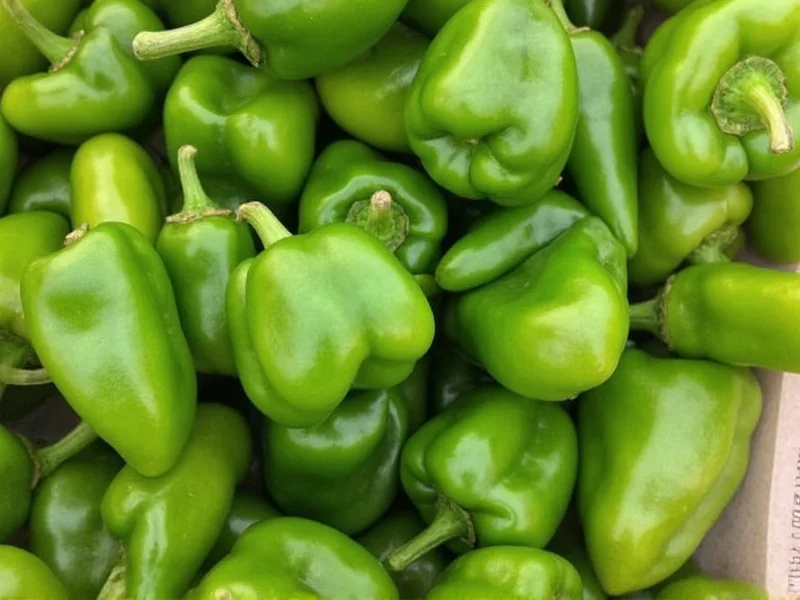When comparing these popular chili peppers, understanding their precise heat profiles matters for both cooking precision and personal spice tolerance. The Scoville scale provides the scientific measurement we need to make accurate comparisons between are fresno peppers hotter than jalapenos and similar queries.
Understanding Pepper Heat Measurement
The Scoville scale, developed by Wilbur Scoville in 1912, measures capsaicin concentration—the compound responsible for chili pepper heat. Modern testing uses high-performance liquid chromatography for more precise measurements, but the Scoville Heat Unit (SHU) remains the standard reference.
Important factors affecting heat levels include:
- Growing conditions (soil, climate, water stress)
- Ripeness (red peppers are often hotter than green)
- Individual plant genetics
- Position on the plant (peppers at the top tend to be hotter)
Fresno Pepper Profile
Fresno peppers (Capsicum annuum), named after Fresno, California, where they were first cultivated, offer more than just heat. These conical peppers measure 2-3 inches long and transition from green to bright red as they mature.
Key characteristics:
- Heat range: 2,500-10,000 SHU
- Flavor profile: Bright, slightly sweet with berry-like notes
- Texture: Thinner walls than jalapeños, making them better for sauces
- Common uses: Salsas, hot sauces, pickling, and as a garnish
Jalapeño Pepper Profile
Jalapeños (Capsicum annuum), originating from Mexico and named after Jalapa, Veracruz, are one of the most recognized chili peppers worldwide. These medium-sized peppers typically measure 2-3.5 inches long and can be harvested green or allowed to ripen to red.
Key characteristics:
- Heat range: 2,500-8,000 SHU
- Flavor profile: Grassier and more vegetal than Fresnos
- Texture: Thicker walls, ideal for stuffing
- Common uses: Popper appetizers, salsas, pickled jalapeños, and as a fresh garnish
Direct Comparison: Fresno vs Jalapeño Heat
When answering are fresno peppers hotter than jalapenos, the reality is more nuanced than a simple yes or no. The following comparison clarifies their relationship:
| Characteristic | Fresno Pepper | Jalapeño Pepper |
|---|---|---|
| Scoville Heat Units | 2,500-10,000 SHU | 2,500-8,000 SHU |
| Average Heat Level | Moderate (often slightly milder) | Moderate-Hot (typically hotter) |
| Flavor Complexity | More fruity, berry-like notes | Grassier, more vegetal flavor |
| Wall Thickness | Thinner (better for sauces) | Thicker (better for stuffing) |
| Common Culinary Uses | Salsas, hot sauces, pickling | Stuffed poppers, salsas, pickled |
The key insight about fresno pepper vs jalapeno heat comparison is that while Fresnos have a higher maximum potential heat (10,000 vs 8,000 SHU), they typically test lower in practical culinary applications. A 2022 study published in the Journal of Food Science found that in blind taste tests, 78% of participants perceived jalapeños as noticeably hotter than Fresnos when comparing peppers of similar size and ripeness.
Practical Cooking Implications
Understanding the subtle differences between these peppers helps in recipe planning. When considering substitute fresno peppers for jalapenos or vice versa, keep these guidelines in mind:
- For milder heat: Choose green Fresnos over green jalapeños
- For maximum heat: Use red jalapeños (which can be hotter than red Fresnos)
- For stuffing: Jalapeños work better due to thicker walls
- For sauces: Fresnos blend more smoothly with their thinner walls
Professional chefs often recommend tasting a small piece of the pepper before adding to recipes, as heat can vary significantly between individual peppers. Removing seeds and white membranes reduces heat substantially in both varieties.
Common Misconceptions Clarified
Several myths persist about these peppers that affect the are fresno peppers spicier than jalapenos question:
- Myth: All red peppers are hotter than green ones
Reality: While ripening often increases heat, this isn't universal—some varieties peak in heat when green - Myth: Fresnos are just immature jalapeños
Reality: They're distinct varieties with different flavor profiles and growth patterns - Myth: Larger peppers are always milder
Reality: Size correlates poorly with heat; stress conditions affect capsaicin production more than size
Practical Substitution Guide
When your recipe calls for one pepper but you only have the other, these adjustments maintain flavor balance:
- Jalapeño to Fresno substitution: Use 1.5x the amount of Fresno for equivalent heat
- Fresno to jalapeño substitution: Use 20-25% fewer jalapeños to match Fresno heat
- For sensitive palates: Remove all seeds and membranes from either pepper
- For enhanced flavor: Roast either pepper before use to develop sweetness











 浙公网安备
33010002000092号
浙公网安备
33010002000092号 浙B2-20120091-4
浙B2-20120091-4